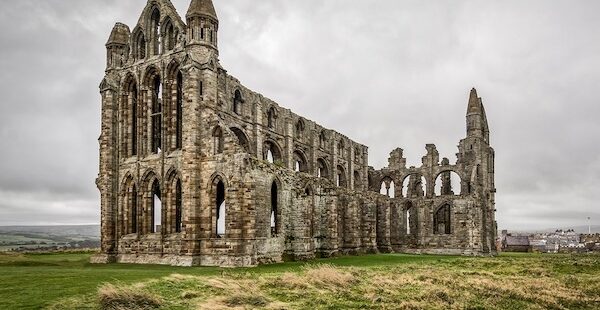
The History of the World by Century
In order to understand historical events, it’s necessary to have two types of ‘grids.’ One grid is the geographical grid: you need to know geography and where things are, in order to make sense of events. The other grid, which is more difficult to develop, is the chronological grid. This means that you need to have a general understanding of the major events that happen, and the order in which they happen.
Most people have a grid for recent history. We’ve heard of, and have a general understanding of, the Civil War, World War I, World War II, and the Cold War. We can correlate historical events by saying, for example, ‘this happened about the same time that the Civil War ended.’ We can immediately understand the significance of the Cuban Missile Crisis, because we understand that it was an event in the Cold War – and we know how important the Cold War was. Without a knowledge of the Cold War, however, we wouldn’t know why the Cuban Missile Crisis was important, and we wouldn’t have a ‘grid’ in which to organize the event.
In order to understand history, we need to expand our grid much farther back than American History. If we can remember just a few events from each century, we can easily learn a grid that will encompass all of human history. Knowing these events, we can begin to correlate things that we read and learn with what else was going on in the world at that time. Suddenly, ‘very old things’ in museums have a new significance and meaning. More importantly, we can better understand the great drama of redemption within the scope of human history. (Note: it’s important to remember that these are key dates within a western-oriented perspective).
Modernity
1900-2000 (20th century AD) – WWI, WWII, Cold War
1800-1900 (19th century AD) – Napoleonic Wars, Victorian Era, Scramble for Africa
1700-1800 (18th century AD) – The Enlightenment, Seven Years War, America Revolution, French Revolution
1600-1700 (17th century AD) – 30 Years War, Growth of New Spain, Glorious Revolution in England, Dutch Empire
1500-1600 (16th century AD) – Reformation, Overthrow of the Aztec/Inca Empires, Spanish Armada, Turkish Expansion
Middle Ages
1400-1500 (15th century AD) – 100 Years War, Fall of Constantinople, Growth of the Renaissance
1300-1400 (14th century AD) – The Great Famine, Black Death, Avignon Papacy
1200-1300 (13th century AD) – ‘High Middle Ages,’ Rise of Scholasticism and Thomas Aquinas
1100-1200 (12th century AD) – Majority of the Crusades
1000-1100 (11th century AD) – Norman Invasion, East-West (‘Great’) Schism
900-1000 (10th century AD) – Height of the dark ages, foundation of the Cluny Abbey
800-900 (9th century AD) – Viking Raids
700-800 (8th century AD) – Carolingian Renaissance, Battle of Tours
600-700 (7th century AD) – The Muslim Conquests
500-600 (6th century AD) – Rise of the Franks and Lombards, Rule of Justinian I
Classical Antiquity*
400-500 (5th century AD) – Hunnish Invasions, Fall of the Western Empire
300-400 (4th century AD) – Constantine’s Edict of Toleration, Battle of Adrianople
200-300 (3rd century AD) – Crisis of the Third Century, Diocletian’s Division of the Kingdom
100-200 (2nd century AD) – Antonine Dynasty
0-100AD (1st century AD) – Rise of Christianity, Julio-Claudian Dynasty
100BC-0 (1st century BC) – Roman expansion into Near East; Julius Caesar; Roman Empire begins
200-100 (2nd century BC) – Maccabean Revolt; Rome conquers Greece
300-200 (3rd century BC) – Punic Wars; Seleucid and Ptolemaic kingdoms fight Syrian wars
400-300 (4th century BC) – Alexander overthrows Persia; Hellenism
500-400 (5th century BC) – Rebuilding Jerusalem, Greco-Persian Wars; beginning of Greek Golden Age
Iron Age*
600-500 (6th century BC) – Fall of Jerusalem; Neo-Babylonian Empire; Cyrus the Great
700-600 (7th century BC) – Fall of Nineveh; Rise of Nebuchadnezzar
800-700 (8th century BC) – Peak of Assyrian Power; Homeric Poems; Founding of Rome; Fall of Samaria; Isaiah
900-800 (9th century BC) – Battle of Qarqar, Founding of Carthage; Ahab
1000-900 (10th century BC) – Dedication of the Temple; Division of Israel; foundation of Neo-Assyrian Empire
1100-1000 (11th century BC) – Saul and David; Dorian invasion of Greece (?)
Bronze Age ^
1200-1100 (12th century BC) – Late Bronze Age Collapse; invasion of Sea Peoples; collapse of Hittites and Kassites
1300-1200 (13th century BC) – Period of the Judges begins; height of Mycenaean civilization
1400-1300 (14th century BC) – Conclusion of the conquest of Canaan; height of Hittite Empire; Akhenaton; Tutankhamen
1500-1400 (15th century BC) – Exodus and Wilderness Wandering; Hatshepsut; Thutmose III and height of Egyptian Expansion; battle of Megiddo (?)
1600-1500 (16th century BC) – Foundation of New Kingdom Egypt; height of Minoan Civilization
1700-1600 (17th century BC) – Height of Minoan Civilization; eruption of Santorini (Thera)
1800-1700 (18th century BC) – Hyksos Invasion; Hammurabi
1900-1800 (19th century BC) – Joseph in Egypt; Israelites enter Egypt; Middle Kingdom Egypt
2000-1900 (20th century BC) – Isaac and Jacob; Middle Kingdom Egypt
2100-2000 (21st century BC) – Abraham; First Intermediate Period (Egypt); Third Dynasty of Ur; ‘Epic of Gilgamesh’ written
2200-2100 (22nd century BC) – First Intermediate Period of Egypt
2300-2200 (23rd century BC) – Old Kingdom Egypt; Akkadian Empire
2400-2300 (24th century BC) – Old Kingdom Egypt; Rise of Sargon
2500-2400 (25th century BC) – Old Kingdom Egypt;
2600-2500 (26th century BC) – Old Kingdom Egypt; Pyramids of Giza and Great Sphinx built
2700-2600 (27th century BC) – Foundation of Old Kingdom Egypt; Imhotep constructs Pyramid of Djoser
2800-2700 (28th century BC) – Early Dynastic Period of Sumer
2900-2800 (29th century BC) – Beginning of Early Dynastic Period of Sumer
3000-2900 (30th century BC) – Foundation of Troy (?)
Chalcolithic Age** ^
3100-3000 (31st century BC) – King Narmer of Egypt
3200-3100 (32nd century BC) – Dispersal of Humanity; Ice Age (?)
3300-3200 (33rd century BC) – The Flood (?)^^; Tower of Babel (?); Ice Age (?)
^ Events in the Chalcolithic and early Bronze Age are difficult to date with accuracy
^^ Date for the flood calculated with assistance from Associates for Biblical Research (https://biblearchaeology.org/abrprojects/4293-the-genesis-5-and-11-genealogy-and-chronology-research-project)
* The 8th, 7th, and 6th centuries BC can be classified as both ‘Iron Age’ AND ‘Classical Antiquity’
** There is disagreement on the time period of the Chalcolithic, as well as when the Bronze Age begins

In place of comments, I would love to hear from you personally. Please reach out to me via the Contact Page to share your thoughts and perspectives on this post!



